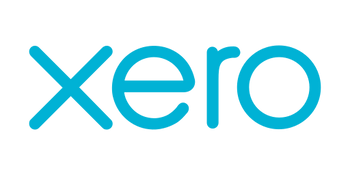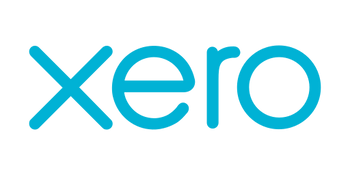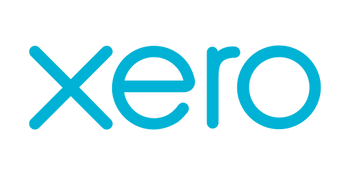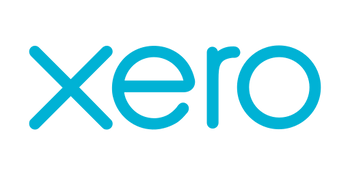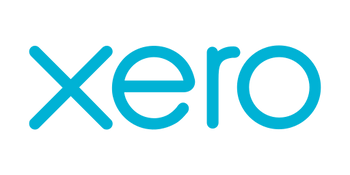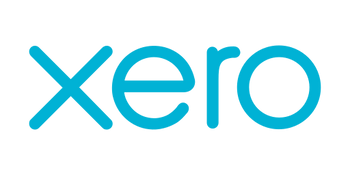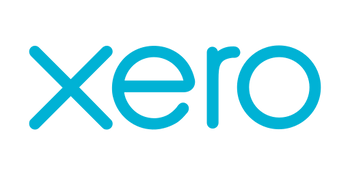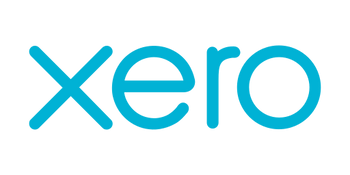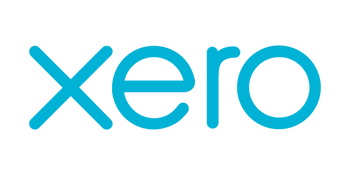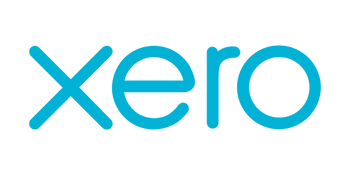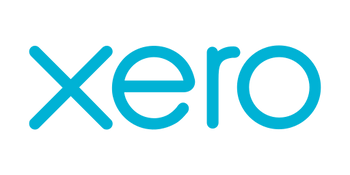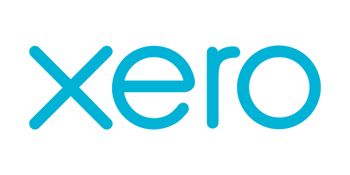{"id":9649863655698,"title":"Xero Update an Asset Integration","handle":"xero-update-an-asset-integration","description":"\u003cbody\u003e\n\n\n \u003cmeta charset=\"utf-8\"\u003e\n \u003ctitle\u003eKeep Fixed Asset Records Accurate and Efficient with Automated Xero Asset Updates | Consultants In-A-Box\u003c\/title\u003e\n \u003cmeta name=\"viewport\" content=\"width=device-width, initial-scale=1\"\u003e\n \u003cstyle\u003e\n body {\n font-family: Inter, \"Segoe UI\", Roboto, sans-serif;\n background: #ffffff;\n color: #1f2937;\n line-height: 1.7;\n margin: 0;\n padding: 48px;\n }\n h1 { font-size: 32px; margin-bottom: 16px; }\n h2 { font-size: 22px; margin-top: 32px; }\n p { margin: 12px 0; }\n ul { margin: 12px 0 12px 24px; }\n \/* No link styles: do not create or style anchors *\/\n \u003c\/style\u003e\n\n\n \u003ch1\u003eKeep Fixed Asset Records Accurate and Efficient with Automated Xero Asset Updates\u003c\/h1\u003e\n\n \u003cp\u003eUpdating fixed asset records is one of those behind-the-scenes tasks that matters more than most leaders realize. When purchase prices change, components are replaced, warranties extended, or tax rules shift, asset registers must be updated quickly and accurately so financial statements, insurance schedules, and capital plans stay reliable. Automated Xero asset updates remove the repetitive manual work—spreadsheets, copy\/paste, and delayed corrections—and make the accounting system the authoritative source for asset status and value.\u003c\/p\u003e\n\n \u003cp\u003eFor finance and operations leaders, this isn’t just a housekeeping improvement. It’s a practical lever for operational resilience, better capital allocation, and cleaner audits. With AI integration and workflow automation, organizations can detect events that matter, apply policy consistently, and keep depreciation, disposals, and revaluations aligned with real-world activity without ballooning headcount.\u003c\/p\u003e\n\n \u003ch2\u003eHow It Works\u003c\/h2\u003e\n \u003cp\u003eAt a business level, automated Xero asset updates act like a reliable translator between operational systems and your accounting ledger. When something about an asset changes—an invoice is corrected, a part is swapped, a warranty extended, or tax treatment revised—those systems tell Xero what changed and why. The accounting record then updates the asset name, purchase price, disposal information, or depreciation parameters so that downstream reports and forecasts reflect the new reality.\u003c\/p\u003e\n\n \u003cp\u003eThe workflow generally includes three pieces: detection, decision, and execution. Detection means recognizing the event (for example, a supplier credit or a maintenance record). Decision means applying policy—materiality thresholds, who must approve, and whether the change requires a journal entry or a simple attribute update. Execution is the safe, auditable application of that change into Xero with supporting evidence attached to the asset record. Throughout, the system preserves an auditable history so finance teams and auditors can see the chain of events and rationale for each adjustment.\u003c\/p\u003e\n\n \u003ch2\u003eThe Power of AI \u0026amp; Agentic Automation\u003c\/h2\u003e\n \u003cp\u003eAI integration and agentic automation add two layers of value: speed and judgment. AI models sift through invoices, emails, maintenance logs, and sensor data to spot changes that humans would otherwise miss or discover too late. Agentic workflows—software agents with the authority to act or orchestrate—apply rules and collaborate with people where judgment is needed, reducing the load on finance teams while keeping control where it matters.\u003c\/p\u003e\n\n \u003cul\u003e\n \u003cli\u003eAutomated detection: Machine learning models read invoice corrections, supplier emails, and CMMS entries to surface events that should trigger an asset update.\u003c\/li\u003e\n \u003cli\u003ePolicy-driven decisions: Agents apply business rules and accounting policies so only appropriate changes proceed automatically; high-impact adjustments are routed to the right approver with context.\u003c\/li\u003e\n \u003cli\u003eContext-aware suggestions: AI assistants recommend depreciation methods or revised useful lives using internal history, industry benchmarks, and tax guidance—cutting review time and uncertainty.\u003c\/li\u003e\n \u003cli\u003eAudit-friendly automation: Every automated update is recorded with the supporting evidence—invoice images, maintenance notes, or approval logs—simplifying audits and regulatory reviews.\u003c\/li\u003e\n \u003cli\u003eAdaptive learning: Over time agents learn common exceptions and refine routing and thresholds, reducing unnecessary approvals and improving accuracy.\u003c\/li\u003e\n \u003c\/ul\u003e\n\n \u003ch2\u003eReal-World Use Cases\u003c\/h2\u003e\n \u003cul\u003e\n \u003cli\u003eRevised Supplier Invoice — A supplier issues a credit for damaged components. An AI agent reads the credit memo, links it to the original asset purchase, and either updates the asset’s purchase price automatically or queues it for a quick approver review. Depreciation schedules update and month-end reconciliations reflect the corrected cost without manual entries.\u003c\/li\u003e\n \u003cli\u003ePartial Disposal \/ Component Upgrade — A manufacturer replaces a high-value compressor module. A workflow bot records the partial disposal, updates net book value, captures the new component cost, and informs procurement and insurance teams so capital plans and coverage stay in sync.\u003c\/li\u003e\n \u003cli\u003eTax or Policy Changes — New guidance changes depreciation treatment for solar installations. An agent identifies affected assets, runs a simulation to show P\u0026amp;L and balance sheet impacts, and prepares a batch of recommended updates for finance to approve, which turns a weeks-long manual effort into a focused review.\u003c\/li\u003e\n \u003cli\u003eData Quality Remediation — Legacy asset registers have inconsistencies: missing dates, zero costs, or mismatched categories. An AI data-quality agent finds anomalies, supplements records with corroborating invoices or procurement entries when available, and produces a prioritized correction list for finance.\u003c\/li\u003e\n \u003cli\u003eMaintenance \u0026amp; Warranty Events — A field service system extends a warranty after an inspection. That event flows into accounting so impairment considerations, depreciation treatments, or insurance schedules can be updated automatically.\u003c\/li\u003e\n \u003cli\u003eCross-System Reconciliation — When ERP, CMMS, and Xero disagree, agents reconcile records by matching serial numbers, invoice amounts, and dates, then propose a single-source-of-truth correction with traceable evidence.\u003c\/li\u003e\n \u003c\/ul\u003e\n\n \u003ch2\u003eBusiness Benefits\u003c\/h2\u003e\n \u003cp\u003eAutomating asset updates delivers practical outcomes that matter to operational and financial leaders. The improvements are immediate and compound over time as processes scale and agents become more accurate.\u003c\/p\u003e\n\n \u003cul\u003e\n \u003cli\u003eTime savings: Routine updates that once required hours or days of manual effort become near-instant or reduced to minutes of review. Month-end close cycles shorten and more time is available for analysis rather than reconciliation.\u003c\/li\u003e\n \u003cli\u003eReduced errors: Eliminating repetitive manual entry cuts transcription errors, misapplied depreciation, and costly restatements—improving confidence in reported numbers.\u003c\/li\u003e\n \u003cli\u003eFaster decision-making: When asset values and depreciation are current, capital allocation, maintenance prioritization, and insurance decisions are based on accurate, timely information.\u003c\/li\u003e\n \u003cli\u003eScalability: Automated workflows scale as the organization grows—new sites, more assets, or centralized finance functions—without a proportional increase in headcount.\u003c\/li\u003e\n \u003cli\u003eCompliance and audit readiness: Detailed logs, evidence attachments, and clear approval trails make tax filings and audits smoother and less risky.\u003c\/li\u003e\n \u003cli\u003eImproved collaboration: Linking asset updates to procurement, maintenance, and insurance systems creates a shared source of truth, reducing disputes and speeding issue resolution.\u003c\/li\u003e\n \u003cli\u003eCost control: Faster detection of incorrect supplier charges or warranty recoveries leads to recovered costs and fewer surprises in budgets.\u003c\/li\u003e\n \u003c\/ul\u003e\n\n \u003ch2\u003eHow Consultants In-A-Box Helps\u003c\/h2\u003e\n \u003cp\u003eConsultants In-A-Box builds practical automations that connect your asset lifecycle to Xero in a way that balances control and efficiency. We begin with process discovery—mapping how assets move through acquisition, maintenance, upgrades, and disposal—to identify delays, error-prone handoffs, and policy exceptions. That map becomes the blueprint for automation: detection agents that watch invoices and maintenance logs, workflow engines that enforce approvals and materiality thresholds, and integrations that keep Xero as the single source of truth.\u003c\/p\u003e\n\n \u003cp\u003eImplementation focuses on pragmatism. Low-risk updates can be set to run automatically while higher-impact changes are routed with compact, evidence-rich packages for rapid decision-making. We also implement monitoring dashboards so finance leaders can see the reduction in manual corrections, the time saved during month-end, and the accuracy improvements in the asset register. Training and change management help finance and operations adopt the new approach quickly, and iterative improvements ensure agents get smarter as they process more real-world examples.\u003c\/p\u003e\n\n \u003ch2\u003eSummary\u003c\/h2\u003e\n \u003cp\u003eKeeping fixed asset records accurate is foundational to reliable financial reporting, regulatory compliance, and effective capital planning. By automating Xero asset updates—and enhancing those automations with AI agents and policy-driven workflows—organizations convert a slow, error-prone administrative task into a fast, auditable process. The result is immediate time savings, fewer corrections, better cross-team collaboration, and clearer visibility into the true economic position of your assets so teams can focus on strategy instead of spreadsheets.\u003c\/p\u003e\n\n\u003c\/body\u003e","published_at":"2024-06-28T12:34:59-05:00","created_at":"2024-06-28T12:35:00-05:00","vendor":"Xero","type":"Integration","tags":[],"price":0,"price_min":0,"price_max":0,"available":true,"price_varies":false,"compare_at_price":null,"compare_at_price_min":0,"compare_at_price_max":0,"compare_at_price_varies":false,"variants":[{"id":49766785057042,"title":"Default Title","option1":"Default Title","option2":null,"option3":null,"sku":"","requires_shipping":true,"taxable":true,"featured_image":null,"available":true,"name":"Xero Update an Asset Integration","public_title":null,"options":["Default Title"],"price":0,"weight":0,"compare_at_price":null,"inventory_management":null,"barcode":null,"requires_selling_plan":false,"selling_plan_allocations":[]}],"images":["\/\/consultantsinabox.com\/cdn\/shop\/files\/09e67c660f3cae28da45d68db5749d32_387eb8f1-59cc-40c0-a478-fe4d0f11d076.png?v=1719596100"],"featured_image":"\/\/consultantsinabox.com\/cdn\/shop\/files\/09e67c660f3cae28da45d68db5749d32_387eb8f1-59cc-40c0-a478-fe4d0f11d076.png?v=1719596100","options":["Title"],"media":[{"alt":"Xero Logo","id":40003601137938,"position":1,"preview_image":{"aspect_ratio":2.0,"height":256,"width":512,"src":"\/\/consultantsinabox.com\/cdn\/shop\/files\/09e67c660f3cae28da45d68db5749d32_387eb8f1-59cc-40c0-a478-fe4d0f11d076.png?v=1719596100"},"aspect_ratio":2.0,"height":256,"media_type":"image","src":"\/\/consultantsinabox.com\/cdn\/shop\/files\/09e67c660f3cae28da45d68db5749d32_387eb8f1-59cc-40c0-a478-fe4d0f11d076.png?v=1719596100","width":512}],"requires_selling_plan":false,"selling_plan_groups":[],"content":"\u003cbody\u003e\n\n\n \u003cmeta charset=\"utf-8\"\u003e\n \u003ctitle\u003eKeep Fixed Asset Records Accurate and Efficient with Automated Xero Asset Updates | Consultants In-A-Box\u003c\/title\u003e\n \u003cmeta name=\"viewport\" content=\"width=device-width, initial-scale=1\"\u003e\n \u003cstyle\u003e\n body {\n font-family: Inter, \"Segoe UI\", Roboto, sans-serif;\n background: #ffffff;\n color: #1f2937;\n line-height: 1.7;\n margin: 0;\n padding: 48px;\n }\n h1 { font-size: 32px; margin-bottom: 16px; }\n h2 { font-size: 22px; margin-top: 32px; }\n p { margin: 12px 0; }\n ul { margin: 12px 0 12px 24px; }\n \/* No link styles: do not create or style anchors *\/\n \u003c\/style\u003e\n\n\n \u003ch1\u003eKeep Fixed Asset Records Accurate and Efficient with Automated Xero Asset Updates\u003c\/h1\u003e\n\n \u003cp\u003eUpdating fixed asset records is one of those behind-the-scenes tasks that matters more than most leaders realize. When purchase prices change, components are replaced, warranties extended, or tax rules shift, asset registers must be updated quickly and accurately so financial statements, insurance schedules, and capital plans stay reliable. Automated Xero asset updates remove the repetitive manual work—spreadsheets, copy\/paste, and delayed corrections—and make the accounting system the authoritative source for asset status and value.\u003c\/p\u003e\n\n \u003cp\u003eFor finance and operations leaders, this isn’t just a housekeeping improvement. It’s a practical lever for operational resilience, better capital allocation, and cleaner audits. With AI integration and workflow automation, organizations can detect events that matter, apply policy consistently, and keep depreciation, disposals, and revaluations aligned with real-world activity without ballooning headcount.\u003c\/p\u003e\n\n \u003ch2\u003eHow It Works\u003c\/h2\u003e\n \u003cp\u003eAt a business level, automated Xero asset updates act like a reliable translator between operational systems and your accounting ledger. When something about an asset changes—an invoice is corrected, a part is swapped, a warranty extended, or tax treatment revised—those systems tell Xero what changed and why. The accounting record then updates the asset name, purchase price, disposal information, or depreciation parameters so that downstream reports and forecasts reflect the new reality.\u003c\/p\u003e\n\n \u003cp\u003eThe workflow generally includes three pieces: detection, decision, and execution. Detection means recognizing the event (for example, a supplier credit or a maintenance record). Decision means applying policy—materiality thresholds, who must approve, and whether the change requires a journal entry or a simple attribute update. Execution is the safe, auditable application of that change into Xero with supporting evidence attached to the asset record. Throughout, the system preserves an auditable history so finance teams and auditors can see the chain of events and rationale for each adjustment.\u003c\/p\u003e\n\n \u003ch2\u003eThe Power of AI \u0026amp; Agentic Automation\u003c\/h2\u003e\n \u003cp\u003eAI integration and agentic automation add two layers of value: speed and judgment. AI models sift through invoices, emails, maintenance logs, and sensor data to spot changes that humans would otherwise miss or discover too late. Agentic workflows—software agents with the authority to act or orchestrate—apply rules and collaborate with people where judgment is needed, reducing the load on finance teams while keeping control where it matters.\u003c\/p\u003e\n\n \u003cul\u003e\n \u003cli\u003eAutomated detection: Machine learning models read invoice corrections, supplier emails, and CMMS entries to surface events that should trigger an asset update.\u003c\/li\u003e\n \u003cli\u003ePolicy-driven decisions: Agents apply business rules and accounting policies so only appropriate changes proceed automatically; high-impact adjustments are routed to the right approver with context.\u003c\/li\u003e\n \u003cli\u003eContext-aware suggestions: AI assistants recommend depreciation methods or revised useful lives using internal history, industry benchmarks, and tax guidance—cutting review time and uncertainty.\u003c\/li\u003e\n \u003cli\u003eAudit-friendly automation: Every automated update is recorded with the supporting evidence—invoice images, maintenance notes, or approval logs—simplifying audits and regulatory reviews.\u003c\/li\u003e\n \u003cli\u003eAdaptive learning: Over time agents learn common exceptions and refine routing and thresholds, reducing unnecessary approvals and improving accuracy.\u003c\/li\u003e\n \u003c\/ul\u003e\n\n \u003ch2\u003eReal-World Use Cases\u003c\/h2\u003e\n \u003cul\u003e\n \u003cli\u003eRevised Supplier Invoice — A supplier issues a credit for damaged components. An AI agent reads the credit memo, links it to the original asset purchase, and either updates the asset’s purchase price automatically or queues it for a quick approver review. Depreciation schedules update and month-end reconciliations reflect the corrected cost without manual entries.\u003c\/li\u003e\n \u003cli\u003ePartial Disposal \/ Component Upgrade — A manufacturer replaces a high-value compressor module. A workflow bot records the partial disposal, updates net book value, captures the new component cost, and informs procurement and insurance teams so capital plans and coverage stay in sync.\u003c\/li\u003e\n \u003cli\u003eTax or Policy Changes — New guidance changes depreciation treatment for solar installations. An agent identifies affected assets, runs a simulation to show P\u0026amp;L and balance sheet impacts, and prepares a batch of recommended updates for finance to approve, which turns a weeks-long manual effort into a focused review.\u003c\/li\u003e\n \u003cli\u003eData Quality Remediation — Legacy asset registers have inconsistencies: missing dates, zero costs, or mismatched categories. An AI data-quality agent finds anomalies, supplements records with corroborating invoices or procurement entries when available, and produces a prioritized correction list for finance.\u003c\/li\u003e\n \u003cli\u003eMaintenance \u0026amp; Warranty Events — A field service system extends a warranty after an inspection. That event flows into accounting so impairment considerations, depreciation treatments, or insurance schedules can be updated automatically.\u003c\/li\u003e\n \u003cli\u003eCross-System Reconciliation — When ERP, CMMS, and Xero disagree, agents reconcile records by matching serial numbers, invoice amounts, and dates, then propose a single-source-of-truth correction with traceable evidence.\u003c\/li\u003e\n \u003c\/ul\u003e\n\n \u003ch2\u003eBusiness Benefits\u003c\/h2\u003e\n \u003cp\u003eAutomating asset updates delivers practical outcomes that matter to operational and financial leaders. The improvements are immediate and compound over time as processes scale and agents become more accurate.\u003c\/p\u003e\n\n \u003cul\u003e\n \u003cli\u003eTime savings: Routine updates that once required hours or days of manual effort become near-instant or reduced to minutes of review. Month-end close cycles shorten and more time is available for analysis rather than reconciliation.\u003c\/li\u003e\n \u003cli\u003eReduced errors: Eliminating repetitive manual entry cuts transcription errors, misapplied depreciation, and costly restatements—improving confidence in reported numbers.\u003c\/li\u003e\n \u003cli\u003eFaster decision-making: When asset values and depreciation are current, capital allocation, maintenance prioritization, and insurance decisions are based on accurate, timely information.\u003c\/li\u003e\n \u003cli\u003eScalability: Automated workflows scale as the organization grows—new sites, more assets, or centralized finance functions—without a proportional increase in headcount.\u003c\/li\u003e\n \u003cli\u003eCompliance and audit readiness: Detailed logs, evidence attachments, and clear approval trails make tax filings and audits smoother and less risky.\u003c\/li\u003e\n \u003cli\u003eImproved collaboration: Linking asset updates to procurement, maintenance, and insurance systems creates a shared source of truth, reducing disputes and speeding issue resolution.\u003c\/li\u003e\n \u003cli\u003eCost control: Faster detection of incorrect supplier charges or warranty recoveries leads to recovered costs and fewer surprises in budgets.\u003c\/li\u003e\n \u003c\/ul\u003e\n\n \u003ch2\u003eHow Consultants In-A-Box Helps\u003c\/h2\u003e\n \u003cp\u003eConsultants In-A-Box builds practical automations that connect your asset lifecycle to Xero in a way that balances control and efficiency. We begin with process discovery—mapping how assets move through acquisition, maintenance, upgrades, and disposal—to identify delays, error-prone handoffs, and policy exceptions. That map becomes the blueprint for automation: detection agents that watch invoices and maintenance logs, workflow engines that enforce approvals and materiality thresholds, and integrations that keep Xero as the single source of truth.\u003c\/p\u003e\n\n \u003cp\u003eImplementation focuses on pragmatism. Low-risk updates can be set to run automatically while higher-impact changes are routed with compact, evidence-rich packages for rapid decision-making. We also implement monitoring dashboards so finance leaders can see the reduction in manual corrections, the time saved during month-end, and the accuracy improvements in the asset register. Training and change management help finance and operations adopt the new approach quickly, and iterative improvements ensure agents get smarter as they process more real-world examples.\u003c\/p\u003e\n\n \u003ch2\u003eSummary\u003c\/h2\u003e\n \u003cp\u003eKeeping fixed asset records accurate is foundational to reliable financial reporting, regulatory compliance, and effective capital planning. By automating Xero asset updates—and enhancing those automations with AI agents and policy-driven workflows—organizations convert a slow, error-prone administrative task into a fast, auditable process. The result is immediate time savings, fewer corrections, better cross-team collaboration, and clearer visibility into the true economic position of your assets so teams can focus on strategy instead of spreadsheets.\u003c\/p\u003e\n\n\u003c\/body\u003e"}

